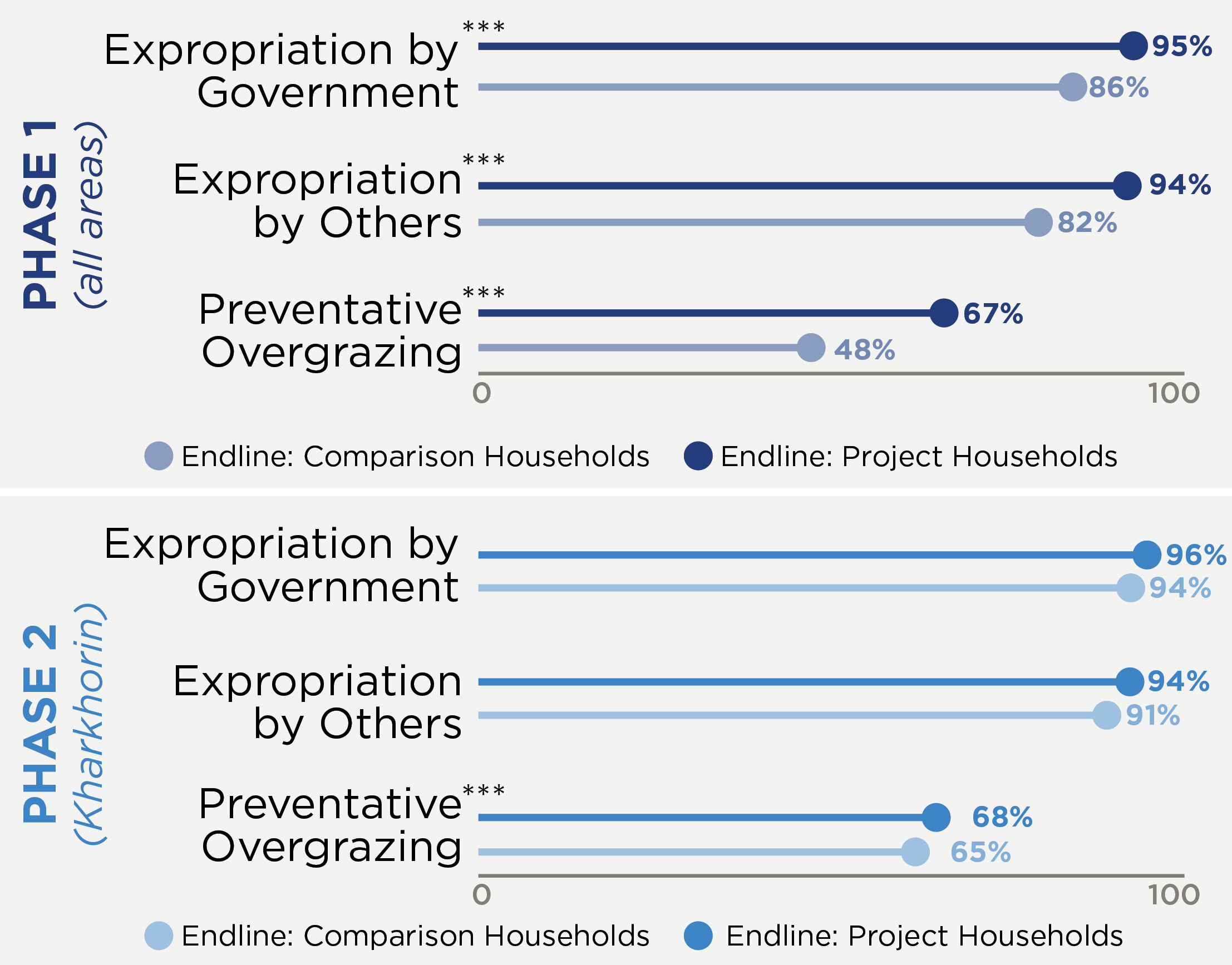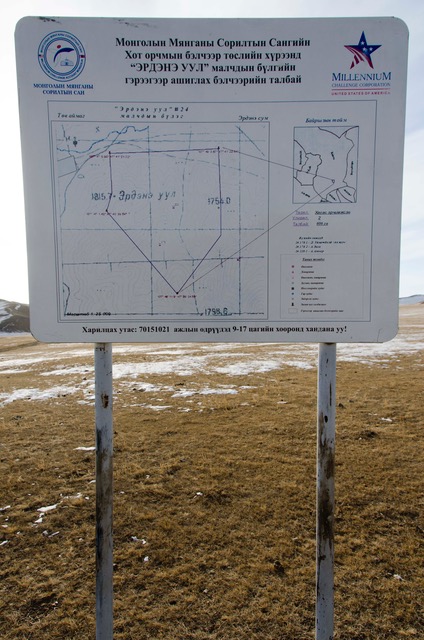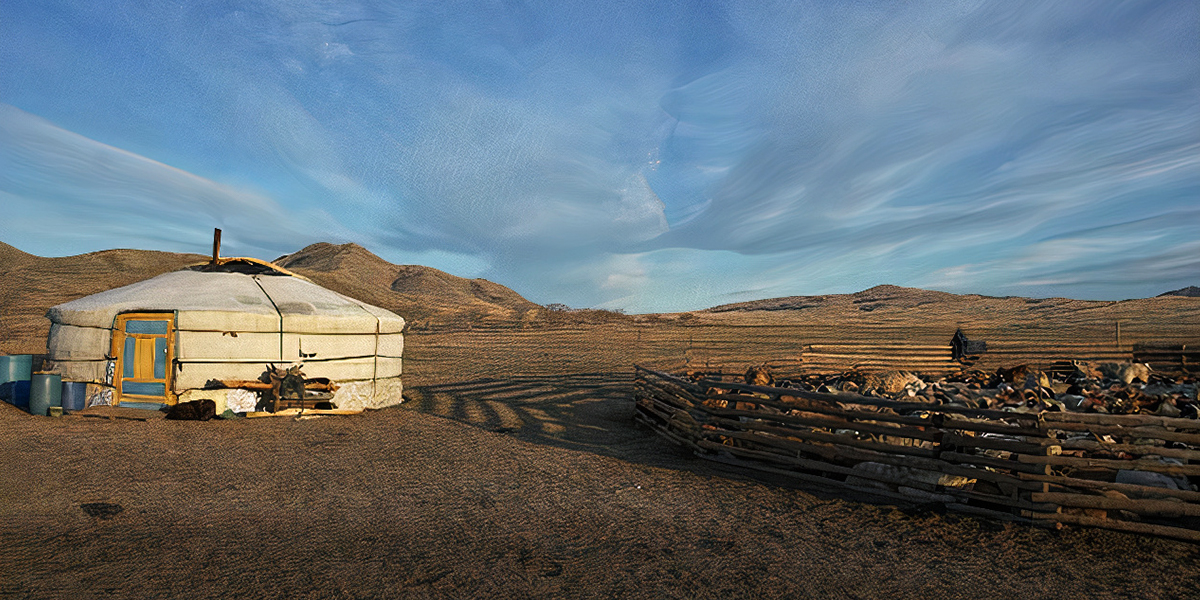Program Overview
MCC’s $284.9 million Mongolia Compact (2008–2013) funded the $10.1 million Peri-Urban Land Leasing Activity, which provided herders with wells, fencing and shelter materials, training, and 15-year land leases on previously open-access rangeland. The activity was based on the theory that providing private property rights and other direct support (wells, and promotion of dairy farming and herd management) on overgrazed land in select areas (Ulaanbaatar, Darkhan and Erdenet in Phase 1; and Choibalsan and Kharkorin in Phase 2) would improve animal husbandry and sustainable land use, which in turn would reduce land degradation and raise herder incomes.
Key Findings
Land Tenure Security
- In Phase 1, the program increased land tenure security both in terms of perceived ability to prevent overgrazing and protecting from land expropriation. In Phase 2, land tenure security improved in Kharkhorin but not in Choibalsan, where there was already high perceived tenure.
Rangeland Management and Pastureland Quality
- In both Phases, program households’ perceptions of pastureland quality improved.
- Phase 1 and Kharkorin households improved some rangeland management practices. In Choibalsan, land was not overgrazed so herd sizes increased.
Herd Management and Investment
- Program households in Ulaanbaatar and Kharkhorin increased the proportion of improved breed of milking cattle.
- Phase 1 households increased investments in immovable property, while in Phase 2, investment effects were mixed.
Earned Income and Milk Yields
- Kharkorin program households reported increases of 92 liters of milk per cow more than comparison households.
- Earned income effects were mixed. In Erdenet households had negative income effects. In Ulaanbaatar, households increased non livestock income but not livestock income and in Choibalsan, they increased livestock revenue but not overall income.
Evaluation Questions
This evaluation was designed to assess the effects of the package of program investments, including long-term leases of grazing land providing exclusive use rights to groups of herder households, provision of wells, and herder training. The evaluation addressed a series of questions about the causal impact of the program on short- and long-term outcomes. This final impact evaluation was designed to answer the following questions:- 1 What was the causal impact of participation in the program on herder incomes, rangeland carrying capacity, and productivity?
- 2 What individual and household-level characteristics predicted higher incomes, rangeland carrying capacity, and productivity due to participation in the program?
- 3 What individual and household-level characteristics predicted changes in rangeland and herd management behavior due to participation in the program?
Detailed Findings
Land Tenure Security

PROJECT IMPACT: Perceived Land Tenure Security across All Areas
Rangeland Management and Pastureland Quality
The program in Phase 1 was effective in improving land use and rangeland management practices. Households were 16 percent (43 percent) more likely to reserve pasture in case of bad weather than comparison households (27 percent). Program households in Darkhan (11 percent vs. 5 percent) and Ulaanbaatar (8 percent vs. 3 percent) also had a higher rate of reserving pasture for rehabilitation.In both phases for comparison and program households, animal numbers increased over time due in part to a 2010 dzud (a natural disaster unique to Mongolia consisting of summer drought followed by a severe winter), which killed large numbers of animals, and the government of Mongolia’s removal of the per head animal tax. Although herders increased their sheep units per hectare, Kharkhorin program herder groups maintained a lower pasture load per hectare. In 2017, they grazed about one-third fewer sheep units per hectare than comparison herders (2.27 vs. 3.34). Program households in Choibalsan, however, increased herd sizes relative to comparison households. This may have been due to Choibalsan having a lower percentage of herder groups that had pasture overload. There were no effects on seasonal migration.
Phase 1 households increased their perceptions of winter pastureland quality, while comparison households experienced decreases. Program households in Kharkhorin had higher perceptions of winter and summer pastureland quality. Choibalsan had no effect, which may be due to that area already being under carrying capacity. Biomass data similarly indicates no significant treatment effect except for one species, where there was an effect in Kharkhorin but not Choibalsan.
Herd Management and Investment

A sign indicating the boundaries of a program plot in Ulaanbaatar peri-urban area
Higher land tenure security translated into substantially higher investment in immovable property in Phase 1 areas. In Phase 2, there were mixed investment effects. In Choibalsan, program households spent more on the purchase and maintenance of wells, while in Kharkhorin, program households spent a significantly smaller amount purchasing and repairing animal shelters.
Earned Income and Milk Yields
Earned income results were inconclusive. In Darkhan and Kharkhorin, program households had a smaller increase in total earned income than comparison households and a smaller increase in net livestock income, suggesting a reverse effect. Ulaanbaatar program households increased non livestock income by triple that of comparisons (1.84 million MNT vs. 660,000 MNT). In Choibalsan, program households had a significant increase in livestock revenue (doubling from 4 million MNT to 8.3 million MNT) that was driven by animal sales, compared with households in the comparison group (increased by 2.7 million MNT). Choibalsan program households had a larger increase in total earned income, though the difference was not statistically significant. There was no detectable program impact on income in Erdenet.In Phase 1, there were no significant impacts in milk yield outcomes. In Phase 2, Kharkhorin program households increased milk production by 168 liters vs a 68 liter increase by comparisons—a difference of 140 percent.
MCC Learning
- Legal and policy reform can significantly impact an intervention’s ability to obtain results. MCC should keep channels open with the partner government on any pending policy and legal reforms even, if the compact is not funding those reforms.
- An incomplete understanding during project design of existing land rights, land use behaviors, and land quality in the specific program areas can result in implementation delays and changes in focus and outcomes. Although a detailed picture of land is often unavailable without in-depth field work, key assumptions should be verified during compact due diligence.
- Land quality can be a key factor in investment and behavior change land utilization. Land quality should be considered when establishing comparison groups and analyzing land-based outcomes.
- The carrying capacity of a land parcel and related grazing patterns change frequently based on factors such as rain and land use. To understand program driven changes in these variables, more frequent monitoring is required, such as via GPS, and with guidance from sector experts.
Evaluation Methods

Data was collected using a large scale, three-wave household panel survey, and surveys with herder group leaders and some government officials. Complementary data on land quality was collected by USDA’s Agricultural Research Service.
2020-002-2488


